The news is coming out of 3GSM thick and fast. To keep up we’re planning to report is a slightly different way. When we see a press release that we thinks of interest to you, Dear Reader, we’ll put it up in full, with a brief comment at the top. Normal service will be resumed post 3GSM.
–
There’s been plenty of rumours about Motorola not being happy with Apple, following the iTunes Mobile launch. Today Mot announce that they are two-timing Apple with Microsoft. Interestingly they say they’ll have OTA (Over The Air) delivery of content by 2007.
—
Motorola and Microsoft Plan to Bring More Choice to Mobile Music Fans
Seamless integration of Windows Media technologies will deliver complete music experience and redefine music discovery on Motorola handsets.
BARCELONA, Spain – 13 Feb 2006 – Today at 3GSM World Congress 2006, Motorola Inc and Microsoft Corp strengthened their existing relationship by announcing a collaboration to integrate Microsoft(r) Windows Media(r) technologies on a number of Motorola’s music handsets, which will allow users to access content from the broadest selection of online music stores from around the world.
Motorola’s music handsets will add support for Windows Media Digital Rights Management (DRM), Windows Media Audio (WMA), the enhanced Windows Media Audio Professional (WMA Pro) codec and Media Transfer Protocol (MTP). These technologies will give consumers the maximum flexibility and options when purchasing and playing back their digital music.
Forthcoming Motorola music handsets will enable seamless connectivity to Windows(r)-based PCs via the USB 2.0 high-speed protocol. By supporting MTP, Windows Media Player will automatically recognise Motorola handsets and enable users to quickly and easily sync their music from their PC to their phone. Music acquired from any pay-per-download or subscription store using Windows Media technology will transfer and play back on Motorola handsets.
In addition to making Motorola handsets interoperable with PCs, Motorola and Microsoft plan to provide mobile handset offerings that are tailored for discovering and acquiring music over an operator’s 3G network. Incorporating the efficient encoding capabilities of the WMA Pro codec, this rich music offering will provide operators with handsets optimised for efficient music downloads* over a 3G network. Consumers will also benefit from quick and easy access to high-quality music on the go.
“Our relationship with Microsoft is about making the mobile world seamless with the desktop world and allowing consumers to experience music wherever and whenever they want,” said Richard Chin, corporate vice president of Global Product Marketing at Motorola. “Building on our existing relationship, this expanded collaboration can further enrich the mobile music experience and expand the mobile music offering to our operator alliances and consumers.”
“Combining Motorola’s wireless handsets with Windows Media technologies will significantly advance the mobile music experience,” said Amir Majidimehr, corporate vice president of the Windows Digital Media Division at Microsoft. “Motorola’s upcoming handsets with Windows Media will offer consumers and operators worldwide the widest range of high-fidelity, no-compromise music choices.”
Motorola began shipping Microsoft technologies on select handsets in 2005, and plans to offer Windows Media-enabled music experiences on multiple handsets worldwide in the second half of 2006. Support for over-the-air delivery capabilities and WMA Pro is expected to follow suit in 2007.
 According to a new report, future growth in the Japanese mobile market is to be focused on the only market segment yet to reach 100% saturation: the under 14s and over 55s.
According to a new report, future growth in the Japanese mobile market is to be focused on the only market segment yet to reach 100% saturation: the under 14s and over 55s. The biggest growth, however, comes from the 55-65 age group, with 1.62 million new customers expected in 2006.
The biggest growth, however, comes from the 55-65 age group, with 1.62 million new customers expected in 2006.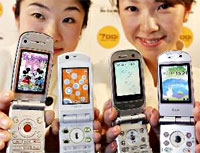 Blended ARPU is expected to continue sliding from $58 pcm in 2005 to $57 pcm by 2007 but this should be compensated by data ARPU which is predicted to rise from $15 pcm to $17 pcm over the same period, thanks to the growth of content market.
Blended ARPU is expected to continue sliding from $58 pcm in 2005 to $57 pcm by 2007 but this should be compensated by data ARPU which is predicted to rise from $15 pcm to $17 pcm over the same period, thanks to the growth of content market. If you happen to be in Watford and are looking up at rooftops, you might see something resembling a inverted grey flowerpot stuck on some of the chimneys (see lovely pics). It’s highly lightly that these are basestations for a new wireless service that’s spreading through the town.
If you happen to be in Watford and are looking up at rooftops, you might see something resembling a inverted grey flowerpot stuck on some of the chimneys (see lovely pics). It’s highly lightly that these are basestations for a new wireless service that’s spreading through the town.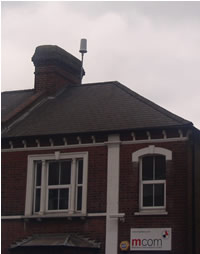 It’s based on a pre-ratified WiMAX standard and uses mesh networking. Thebase-stations communicate with each other, as well as end-users, providing resilience in the core network. If the wired connectivity from a base-station fails, it can re-route through another base-station, without loss of service.
It’s based on a pre-ratified WiMAX standard and uses mesh networking. Thebase-stations communicate with each other, as well as end-users, providing resilience in the core network. If the wired connectivity from a base-station fails, it can re-route through another base-station, without loss of service.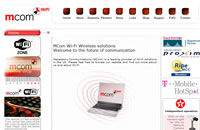 One major advantage this wireless service has over ADSL is that it’s asymmetric service, meaning the upstream bandwidth is the same as thedownstream – ADSL receives more bandwidth than it can send. Symmetrical bandwidth may not mean much for casual Internetbrowsing, but is important for business and when offering voice services.
One major advantage this wireless service has over ADSL is that it’s asymmetric service, meaning the upstream bandwidth is the same as thedownstream – ADSL receives more bandwidth than it can send. Symmetrical bandwidth may not mean much for casual Internetbrowsing, but is important for business and when offering voice services. Since the service uses VoIP, lines can be added as needed. The basic services can be plugged into existing an PBX/Keysystem, this can be extended all the way to a hosted IP PBX runand maintained by MCOM.
Since the service uses VoIP, lines can be added as needed. The basic services can be plugged into existing an PBX/Keysystem, this can be extended all the way to a hosted IP PBX runand maintained by MCOM.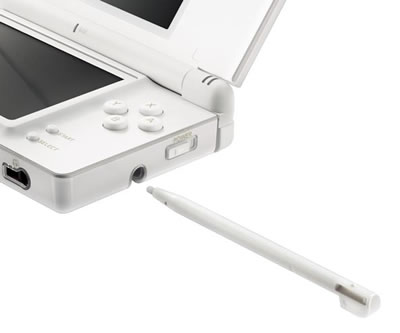
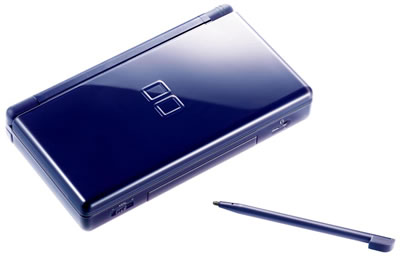
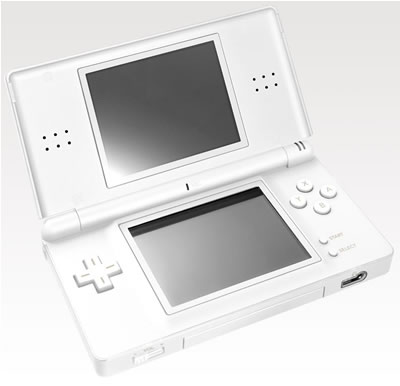
 Wikinews, the collaborative online journalism project spawned from Wikipedia, has been digging up more dirt on the Wikipedia edits made by Capitol Hill staffers.
Wikinews, the collaborative online journalism project spawned from Wikipedia, has been digging up more dirt on the Wikipedia edits made by Capitol Hill staffers. Hot on their trail, the meticulous volunteers at Wikinews collected every Senate IP which had ever been edited on Wikipedia (up to February 3) and examined where the IPs came, what was edited and what the edits comprised of.
Hot on their trail, the meticulous volunteers at Wikinews collected every Senate IP which had ever been edited on Wikipedia (up to February 3) and examined where the IPs came, what was edited and what the edits comprised of. Open, collaborative information projects like Wikipedia and Wikinews have been welcomed by Internet activists keen to make unbiased information freely available, but the very nature of the project makes it wide open to abuse (as one pundit commented, “The information on your screen may be only as good as the most recent users’ motives.”)
Open, collaborative information projects like Wikipedia and Wikinews have been welcomed by Internet activists keen to make unbiased information freely available, but the very nature of the project makes it wide open to abuse (as one pundit commented, “The information on your screen may be only as good as the most recent users’ motives.”) ‘The Apprentice’ TV show has been a smash hit in the UK, much the same as it was in the US. The BBC now plan to use it as the ‘first extensive broadband experience,’ as part of the BBC TV Plus project.
‘The Apprentice’ TV show has been a smash hit in the UK, much the same as it was in the US. The BBC now plan to use it as the ‘first extensive broadband experience,’ as part of the BBC TV Plus project.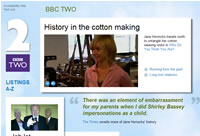 Initially looking at these advances it’s easy to get excited, but when looked in context of how long it’s taken, a frustrations come to the surface.
Initially looking at these advances it’s easy to get excited, but when looked in context of how long it’s taken, a frustrations come to the surface. (Funnily enough, after reading that article the person responsible for the project contacted us and it turned out to be someone whose previous work outside the BBC we’d been very impressed with.)
(Funnily enough, after reading that article the person responsible for the project contacted us and it turned out to be someone whose previous work outside the BBC we’d been very impressed with.) The easy way of getting “content” into a mobile phone, would be just to print 2D barcodes. However, Viacom Outdoor has started a rather more challenging experiment, fitting London Underground posters with Bluetooth transmitters.
The easy way of getting “content” into a mobile phone, would be just to print 2D barcodes. However, Viacom Outdoor has started a rather more challenging experiment, fitting London Underground posters with Bluetooth transmitters.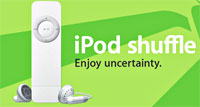 Keen to further expand their vice-like grip on the portable digital music market, Apple have unveiled a cut-down 1GB version of their turbo box-shifting iPod Nano player.
Keen to further expand their vice-like grip on the portable digital music market, Apple have unveiled a cut-down 1GB version of their turbo box-shifting iPod Nano player. The new 1GB Nano can hold up to 240 songs or 15,000 photographs and comes with all the usual Nano features, including the colour display and docking connector.
The new 1GB Nano can hold up to 240 songs or 15,000 photographs and comes with all the usual Nano features, including the colour display and docking connector.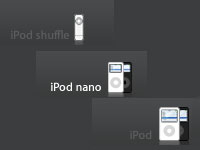 As Shaw Wu, an analyst with American Technology Research, put it: “Apple is selling a $69 MP3 player with the best software. How do you compete with that? It’s tough.”
As Shaw Wu, an analyst with American Technology Research, put it: “Apple is selling a $69 MP3 player with the best software. How do you compete with that? It’s tough.” The iPod range continues to be an outrageously successful money spinner for Apple, with around 32 million iPods shifted last year, including 14 million during the holiday season.
The iPod range continues to be an outrageously successful money spinner for Apple, with around 32 million iPods shifted last year, including 14 million during the holiday season.